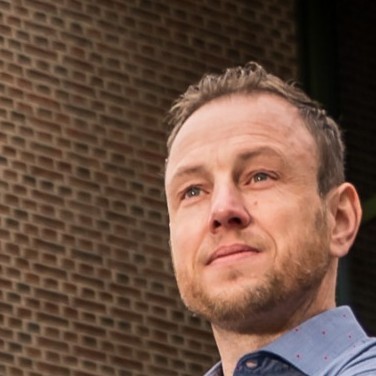By Harald van Hooren, lead partner Digital Deconstruction | Province of Limburg (NL)
Digital Deconstruction (DDC) started in January 2020 after Interreg Northwest Europe agreed to the Province of Limburg's project proposal to develop a digital software platform, in collaboration with 13 other European partners to reuse building materials and promote circular construction in Europe. The project will reach its final status in September 2023. Harald looks back on three years of cross-border cooperation to realize a "digital decision software platform" to serve the construction industry.
"The idea to enter into a European project came from the (private) partners Parkstad Limburg, Blockmaterials and GTB Lab. They were already working out a plan on a European scale, with professional and scientific partners from France, Luxembourg and Belgium joining in."
The Province of Limburg stepped in because the project fits perfectly within its Circular Economy policy framework and its goal to develop, stimulate and innovate ecosystems in the field of circular economy within its region. "Because of the good network and knowledge base of GTB Lab, Blockmaterials and Parkstad Limburg, we recognised that the project could be of added value for the province and the region. Parkstad Limburg is leading the way on circularity with its regional program and that is where the urgency in circular building is highest. We saw what the 'Super Local' project had delivered and thought DDC was a great successor. In addition, GTB Lab's fully sustainably built office is a physical example where knowledge in circular building lies and can also be spread. DDC gives builders, architects, designers and the demolition industry in other parts of the Netherlands and Europe the tools to make circular building truly possible. Together, the project partners within DDC managed to develop the plans for the platform and the pilots in each country served as pilot sites to test the digital tools. The work was mainly done by them, with the province keeping its finger on the pulse, guiding partner meetings and managing things financially and administratively towards Interreg NWE. In the next months I am looking into the final reports and then the project will come to an end at the end of September."
International interest in DDC
"During the project a lot of interest has been shown from other European countries, such as Ireland and Spain. Making this open source tool public is the next task. The integrated digital deconstruction software platform has reached the TRL7 standard through the input of its various tools (3D scanning, Building Information Modelling (BIM), materials and building database, blockchain technology), but will not be commercially mature until it reaches the TRL9 standard. Through a possible follow-on project, the developed platform can be taken to the next level. Everyone within the current project sees the added value.
Nice developments within transnational network
"Despite the fact that the pandemic paralyzed a lot of work, everyone is satisfied with the developed tools and the digital platform. We were finally able to test the tools at the pilot sites Ettelbrück Station (L), Romeins Museum Heerlen (NL), Hof ter Laken (B), Euroffice (L), Residential building Vilogia(F), Gare Villeneuve St. George (F) and Gare du Nord (F).
An important asset are the outcomes from the regional innovation hubs and the transnational hubs. New stakeholders came in and the (transnational) network has been strengthened, enabling the further development of digital tools in the future."
Proud of European cooperation
"I am proud of the achievements we all made together, despite the difficult situation the project was in. During the final event in Heerlen on June 8, I heard the same from all sides and everyone felt that the project and the cooperation went very well. In fact, the European composition of the project made it very dynamic, with good discussions leading to new insights on both sides to achieve a common goal. Working together to bring the project to a good result was our goal and we succeeded. We still have until the end of September to finalize some things so that Interreg NWE can also close its program at the end of 2023. This project therefore lays a good foundation for a possible sequel."
"Hats off to all project partners and subpartners of DDC! We did it together, even when for most of the project period we only relied on each other online!"


